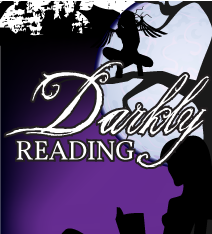
When I wrote my new novel, The House of Dead Maids, I wanted to create an atmosphere that would disturb my readers. I didn’t just want to scare them because scares are temporary, and they often end in a laugh. No, I wanted to make my readers uneasy. I wanted them to feel unsafe. So I thought about places where we humans feel unsafe, and why they make us feel this way.
One of my earliest memories has no words or data attached to it. In essence, it’s nothing more than a snapshot. I see in my memory a small room brightened by a single grimy window. Flyspecks and dirt obscure the window so that I can’t make out a view beyond it. A spindly table stands in the center of the room, but it is cheap, old, and gray with dust and time. I notice a rug on the floor beneath the table, but its pattern is obliterated by dust.
In my memory, I feel wonder. This room is so like other rooms I know but so completely different. I am afraid of who—or what—might be living here.
I have no idea now where this place was, but when I went to college, I learned its name and why it frightened me. My dusty room was a liminal place, and such places awaken in us a feeling verging on instinctive dread. Liminality is a transitional state, emptied of one thing but not yet another, and the deepest, oldest layers of our brains warn us of its danger. Twilight, for instance, is neither day nor night. So is an eclipse. Caves, springs, volcanoes, mountaintops, and shorelines mark places where things change from one state to another. Our ancestors worshiped such places and peopled them with dangerous sprites. Magic rituals focus on liminal places and objects in liminal states. The corpse is such an object—it is, temporarily, neither the loved one we knew, nor is it dust, a part of nature. And the abandoned house is neither a place to live nor a place with another use. It is a “corpse” house—a place to avoid.
Liminal places seem supercharged with possibility. The normal rules don’t apply there. Anything can happen. These possibilities frighten us because they threaten to overturn our orderly world. The devil waits for us at the crossroads. Closets—small uninhabited rooms—make us uneasy. Monsters hide in the empty darkness under our beds. We feel nervous about long, dark hallways.
My book is a prequel to Emily Brontë’s Victorian novel, Wuthering Heights, and that classic story is all about intruding upon liminal places. Over and over, the text mentions doors, windows, fences, and stairways. Over and over, characters force their way into places where they are unwelcome. The focus of the novel is a woman who has been dead for seventeen years—a liminal figure. The story ends at her grave—a liminal place.
So my novel, too, lingers on liminal places and liminal states. My main character, Tabby, comes to her new house over the ancient pathways of fire, water, earth and air—driven down dirt roads, ferried upriver like a lost soul entering the underworld, and carried in, at the end, with a lighted lantern before her. She finds herself in a place that is not really lived in but not abandoned, a dusty maze of a house where she is the Young Maid, neither a servant nor a person in charge. She discovers that the furthest point inside Seldom House is an empty courtyard, neither inside nor outside. This empty courtyard contains an empty grave. And it isn’t long before she meets the last Young Maid: that most liminal of figures, neither alive nor dead—an empty-eyed, gray-faced ghost.
Special Brontë-themed giveaway!
One Grand Prize winner will receive The House of Dead Maids, a gorgeous Brontë sisters pocket mirror, and the HarperTeen edition of Wuthering Heights! Two lucky runners-up will receive the two books. To enter, send an email to DeadMaidsBook@gmail.com with your name, email address, and shipping address (if you're under 13, submit a parent's name and email address). One entry per person and prizes will only be shipped to US or Canadian addresses. Entries must be received by midnight (PDT) on October 31. Winners will be selected in a random drawing on November 1 and notified via email.
The next stop on the tour is Adventures in Children's Publishing at http://childrenspublishing.blogspot.com/.








































